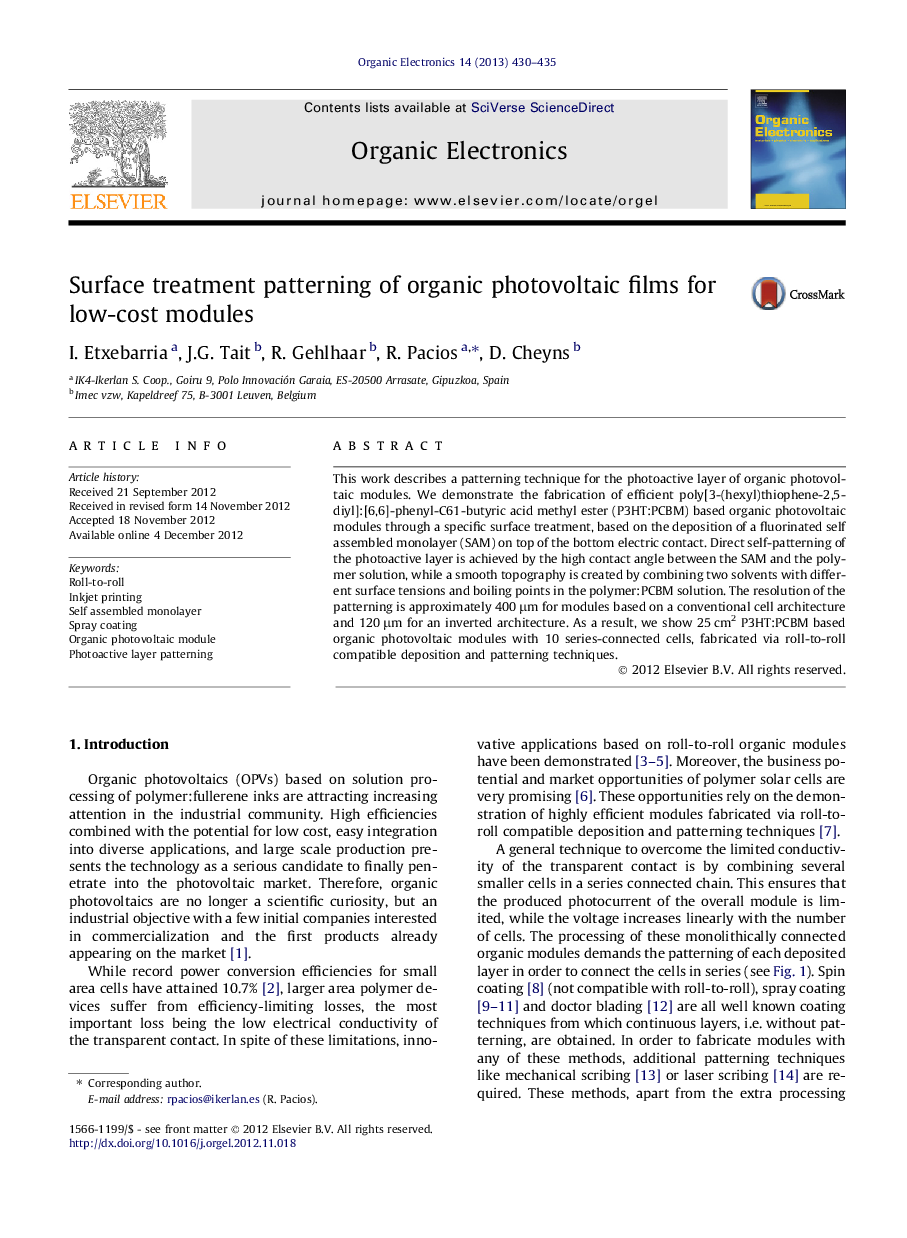| Article ID | Journal | Published Year | Pages | File Type |
|---|---|---|---|---|
| 1263986 | Organic Electronics | 2013 | 6 Pages |
This work describes a patterning technique for the photoactive layer of organic photovoltaic modules. We demonstrate the fabrication of efficient poly[3-(hexyl)thiophene-2,5-diyl]:[6,6]-phenyl-C61-butyric acid methyl ester (P3HT:PCBM) based organic photovoltaic modules through a specific surface treatment, based on the deposition of a fluorinated self assembled monolayer (SAM) on top of the bottom electric contact. Direct self-patterning of the photoactive layer is achieved by the high contact angle between the SAM and the polymer solution, while a smooth topography is created by combining two solvents with different surface tensions and boiling points in the polymer:PCBM solution. The resolution of the patterning is approximately 400 μm for modules based on a conventional cell architecture and 120 μm for an inverted architecture. As a result, we show 25 cm2 P3HT:PCBM based organic photovoltaic modules with 10 series-connected cells, fabricated via roll-to-roll compatible deposition and patterning techniques.
Graphical abstract.Figure optionsDownload full-size imageDownload as PowerPoint slideHighlights► A self assembled monolayer is used for the patterning of the photoactive layer. ► The high contact angle between the SAM and the polymer solvent allows the patterning. ► Two solvent mixture systems are used to have uniform and smooth photoactive layers. ► Mechanically scribed modules and SAM patterned modules perform very similarly.
